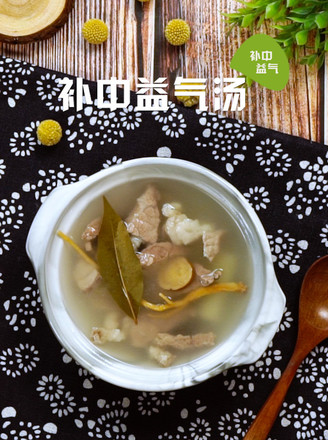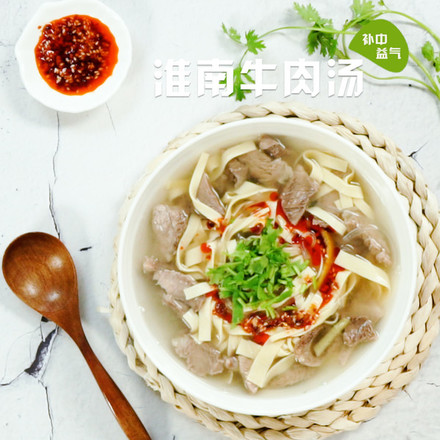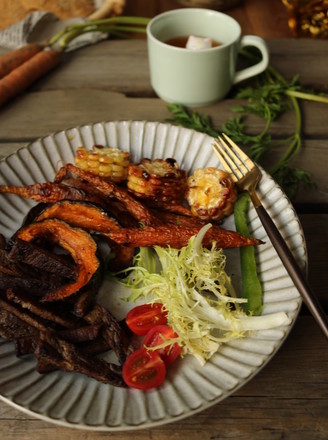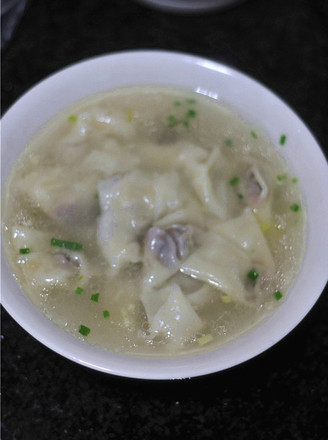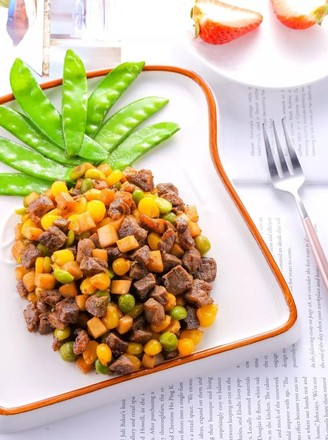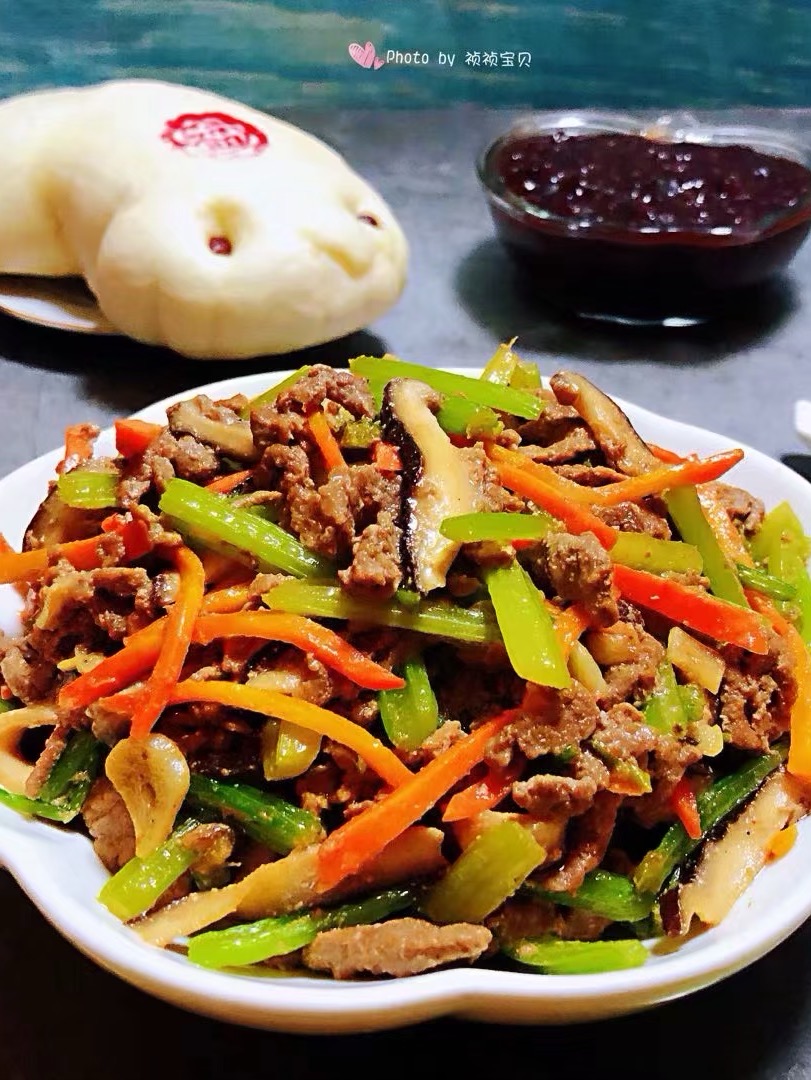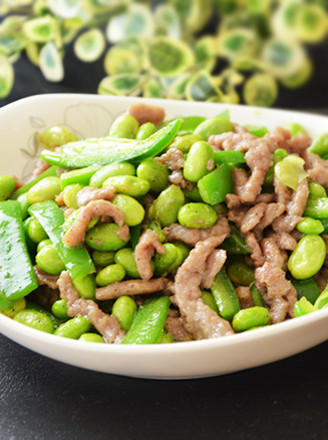Xinlan Hand-made Private Kitchen [homemade Spicy Beef Jerky]——except Wushan is Not A Cloud
by Cat's eye
Favorite
Difficulty
Hard
Time
2h
Serving
2
Life is short, decades have passed; life is long again, hesitating for nearly ten thousand days...
Whether it is long or short, there are always people, feelings, things, and tastes that we can never forget in our memory.
The first milk, the first love, the first parenthood, the first success, the first failure...too many firsts, too many to replace.
You will never forget the lover who opened your heart for the first time, no matter the process is sweet or painful, no matter the ending is sad or joy, when the dream comes back at midnight, the most clear and fuzzy figure emerges in the hazy.
You will never forget the parents who made you feel warm for the first time, whether it's chattering or silently caring, whether it's reproaching or sincerely praising. When hesitating and losing, the first person who wants to talk is the white temples. parents.
You will never forget the taste that surprised you for the first time, whether it is the delicacies of the mountain and the sea or the clear soup, whether it is the dragon, liver and phoenix gall, or the miscellaneous grains from the earthen stove.
...
This beef jerky is the first snack she made for me. Through my improvement and thousands of trial productions, the texture and taste are almost perfect. Instead, it became her favorite snack. Of course, if you want me to make that red beef jerky like a child's face, sorry, no pigment, we can't make it.
No matter how difficult it is to write, I think of Yiren, who is in the middle of the water, and I will never see each other again in this life, and my heart is like a knife. Forgive me for hurriedly closing the pen.
once having seen the best, the rest is not worthwhile looking. "
Whether it is long or short, there are always people, feelings, things, and tastes that we can never forget in our memory.
The first milk, the first love, the first parenthood, the first success, the first failure...too many firsts, too many to replace.
You will never forget the lover who opened your heart for the first time, no matter the process is sweet or painful, no matter the ending is sad or joy, when the dream comes back at midnight, the most clear and fuzzy figure emerges in the hazy.
You will never forget the parents who made you feel warm for the first time, whether it's chattering or silently caring, whether it's reproaching or sincerely praising. When hesitating and losing, the first person who wants to talk is the white temples. parents.
You will never forget the taste that surprised you for the first time, whether it is the delicacies of the mountain and the sea or the clear soup, whether it is the dragon, liver and phoenix gall, or the miscellaneous grains from the earthen stove.
...
This beef jerky is the first snack she made for me. Through my improvement and thousands of trial productions, the texture and taste are almost perfect. Instead, it became her favorite snack. Of course, if you want me to make that red beef jerky like a child's face, sorry, no pigment, we can't make it.
No matter how difficult it is to write, I think of Yiren, who is in the middle of the water, and I will never see each other again in this life, and my heart is like a knife. Forgive me for hurriedly closing the pen.
once having seen the best, the rest is not worthwhile looking. "

![Xinlan Hand-made Private Kitchen [homemade Spicy Beef Jerky]——except Wushan is Not A Cloud Xinlan Hand-made Private Kitchen [homemade Spicy Beef Jerky]——except Wushan is Not A Cloud](https://img.simplechinesefood.com/7a/7ac172de3edb16e3c904ea164bd8babe.jpg)
![Xinlan Hand-made Private Kitchen [homemade Spicy Beef Jerky]——except Wushan is Not A Cloud recipe Xinlan Hand-made Private Kitchen [homemade Spicy Beef Jerky]——except Wushan is Not A Cloud recipe](https://img.simplechinesefood.com/2a/2a98bc439cd62a06ff16ec46d1b0b26c.jpg)
![Xinlan Hand-made Private Kitchen [homemade Spicy Beef Jerky]——except Wushan is Not A Cloud recipe Xinlan Hand-made Private Kitchen [homemade Spicy Beef Jerky]——except Wushan is Not A Cloud recipe](https://img.simplechinesefood.com/34/344a79b35102955972c851b89f290263.jpg)
![Xinlan Hand-made Private Kitchen [homemade Spicy Beef Jerky]——except Wushan is Not A Cloud recipe Xinlan Hand-made Private Kitchen [homemade Spicy Beef Jerky]——except Wushan is Not A Cloud recipe](https://img.simplechinesefood.com/ab/abc710e01ae7b407fac9ab127dd77e85.jpg)
![Xinlan Hand-made Private Kitchen [homemade Spicy Beef Jerky]——except Wushan is Not A Cloud recipe Xinlan Hand-made Private Kitchen [homemade Spicy Beef Jerky]——except Wushan is Not A Cloud recipe](https://img.simplechinesefood.com/c9/c9332101562b9132a2a4417051cd12bc.jpg)
![Xinlan Hand-made Private Kitchen [homemade Spicy Beef Jerky]——except Wushan is Not A Cloud recipe Xinlan Hand-made Private Kitchen [homemade Spicy Beef Jerky]——except Wushan is Not A Cloud recipe](https://img.simplechinesefood.com/aa/aa12eb200c15cb6f07bdca297bcd541f.jpg)
![Xinlan Hand-made Private Kitchen [homemade Spicy Beef Jerky]——except Wushan is Not A Cloud recipe Xinlan Hand-made Private Kitchen [homemade Spicy Beef Jerky]——except Wushan is Not A Cloud recipe](https://img.simplechinesefood.com/0c/0c0f8a2177dc2c8e2fe45c43311dca19.jpg)
![Xinlan Hand-made Private Kitchen [homemade Spicy Beef Jerky]——except Wushan is Not A Cloud recipe Xinlan Hand-made Private Kitchen [homemade Spicy Beef Jerky]——except Wushan is Not A Cloud recipe](https://img.simplechinesefood.com/65/65272e5035b1f970dd45d81fa6a026e9.jpg)
![Xinlan Hand-made Private Kitchen [homemade Spicy Beef Jerky]——except Wushan is Not A Cloud recipe Xinlan Hand-made Private Kitchen [homemade Spicy Beef Jerky]——except Wushan is Not A Cloud recipe](https://img.simplechinesefood.com/0e/0e48949ef1cb2b027e4c716957596647.jpg)
![Xinlan Hand-made Private Kitchen [homemade Spicy Beef Jerky]——except Wushan is Not A Cloud recipe Xinlan Hand-made Private Kitchen [homemade Spicy Beef Jerky]——except Wushan is Not A Cloud recipe](https://img.simplechinesefood.com/93/934dd0b10a04d84be2eda112acc8da14.jpg)
![Xinlan Hand-made Private Kitchen [homemade Spicy Beef Jerky]——except Wushan is Not A Cloud recipe Xinlan Hand-made Private Kitchen [homemade Spicy Beef Jerky]——except Wushan is Not A Cloud recipe](https://img.simplechinesefood.com/73/73cf75bfe94e3c7c1f16e03a77683abe.jpg)
![Xinlan Hand-made Private Kitchen [homemade Spicy Beef Jerky]——except Wushan is Not A Cloud recipe Xinlan Hand-made Private Kitchen [homemade Spicy Beef Jerky]——except Wushan is Not A Cloud recipe](https://img.simplechinesefood.com/e9/e9f973a3704bc1bf90a20c98a6d010f1.jpg)
![Xinlan Hand-made Private Kitchen [homemade Spicy Beef Jerky]——except Wushan is Not A Cloud recipe Xinlan Hand-made Private Kitchen [homemade Spicy Beef Jerky]——except Wushan is Not A Cloud recipe](https://img.simplechinesefood.com/c9/c9352012fdf879dbe1b8548aaea9f212.jpg)
